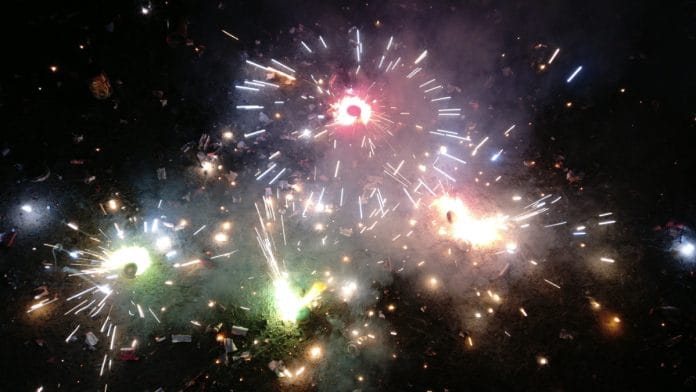Thank you dear subscribers, we are overwhelmed with your response.
Your Turn is a unique section from ThePrint featuring points of view from its subscribers. If you are a subscriber, have a point of view, please send it to us. If not, do subscribe here: https://englishdev.theprint.in/subscribe/
While I researched for my son’s school assignment, I came across several articles about the connection between Diwali and Fireworks. It’s quite enlightening to me, more than my 10 year old son!
In Hinduism, there are many theories, reference to ancient literatures which depicts the festival as return of the Lord King Rama to ayodhya after rescuing Sita from the clutches of Ravana, slaying of daemons, destroy the evil in the human minds and ignite the spark for better future are popular claims among all.
There is no definite proof to claim when bursting of crackers became an integral part of the celebrations, apart from some Sanskrit literature does not align with the time period. However, as the name means, it makes more sense with lighting diyas or lamps symbolising the triumph of light over the darkness and good over evil.
Crackers often contain harmful chemical elements to produce vibrant colours and sound once ignited. Moreover, it causes air and noise pollution beyond WHO allowed limits. Inhaling the fumes emitted by the firecrackers increase the chances of respiratory problems, allergies, lung infections and even heart attacks risks. The waste results in a larger proportion of landfills which pollute the environment beyond the imaginable levels. When fireworks burst into their colourful lights, chemical debris is left scattered across the ground. Perchlorate is one of them and it is often associated with contaminating soil and water. This chemical remains in the environment for long periods, easily absorbed by neighbouring flora. [https://earth.org/environmental-impact-of-fireworks/]
The debate is endless between the supporters and the opposers. There has to be a middle path to tread without hurting the religious sentiments and protect the health of the mass.
I could see below measures could be a way forward, if the government makes a conscious call without any prejudice towards the religion:
- Community fireworks celebrations instead of celebrating at individual capacity, which may reduce the consumption and in turn impact on the environment.
- Green fireworks which do not emit harmful gases and don’t produce high decibels.
Nowadays, bursting Diwali is also portrayed as a pride to spend more money on the fireworks to showcase the wealth of an individual or a family, which increases the consumption and impact to the environment invariably. We as a human need to understand the very essence of the festivals which have been events of community celebrations with no caste and creed barriers.
As we reflect on the significance of Diwali, it’s essential to consider the diverse interpretations of this festival. For instance, the celebration of Deep Daan Utsav highlights the historical and cultural richness that extends beyond the conventional festivities.
We need a paradigm shift in the way we celebrate festivals keeping in mind that this mother nature has been abused over centuries and following 1000s of years old traditions in the name of religion makes it irrelevant for the current and future generations.
Diwali is all about cheer. Let’s spread cheer, light and goodness ever.
References:
In his book ‘Military Transition in Early Modern Asia, 1400–1750: Cavalry, Guns, Government
and Ships. By Kaushik Roy. Kaushik Roy writes: “Ancient India knew of saltpetre, which was described as agnichurna (powder that cracks fires) in old Sanskrit texts. In fact, Kautilya Arathasastra (composed between 300 BCE – 300 CE) speaks of using saltpetre, resin and other tree barks for creating poisonous smoke in order to disorient the enemy in the battlefield. The ancient and early medieval Indians used it for incendiary devices, and not for manufacturing gun powder or using its propulsive force.”
https://onlinelibrary.wiley.com/doi/abs/10.1111/hisn.12377
Eminent historian P K Gode wrote that the use of fireworks in Diwali celebrations “must have come into existence after about 1400 AD, when gunpowder came to be used in Indian warfare”. Some paintings from the 16th and 17th century also suggest fireworks were part of Diwali celebrations.
These pieces are being published as they have been received – they have not been edited/fact-checked by ThePrint.


